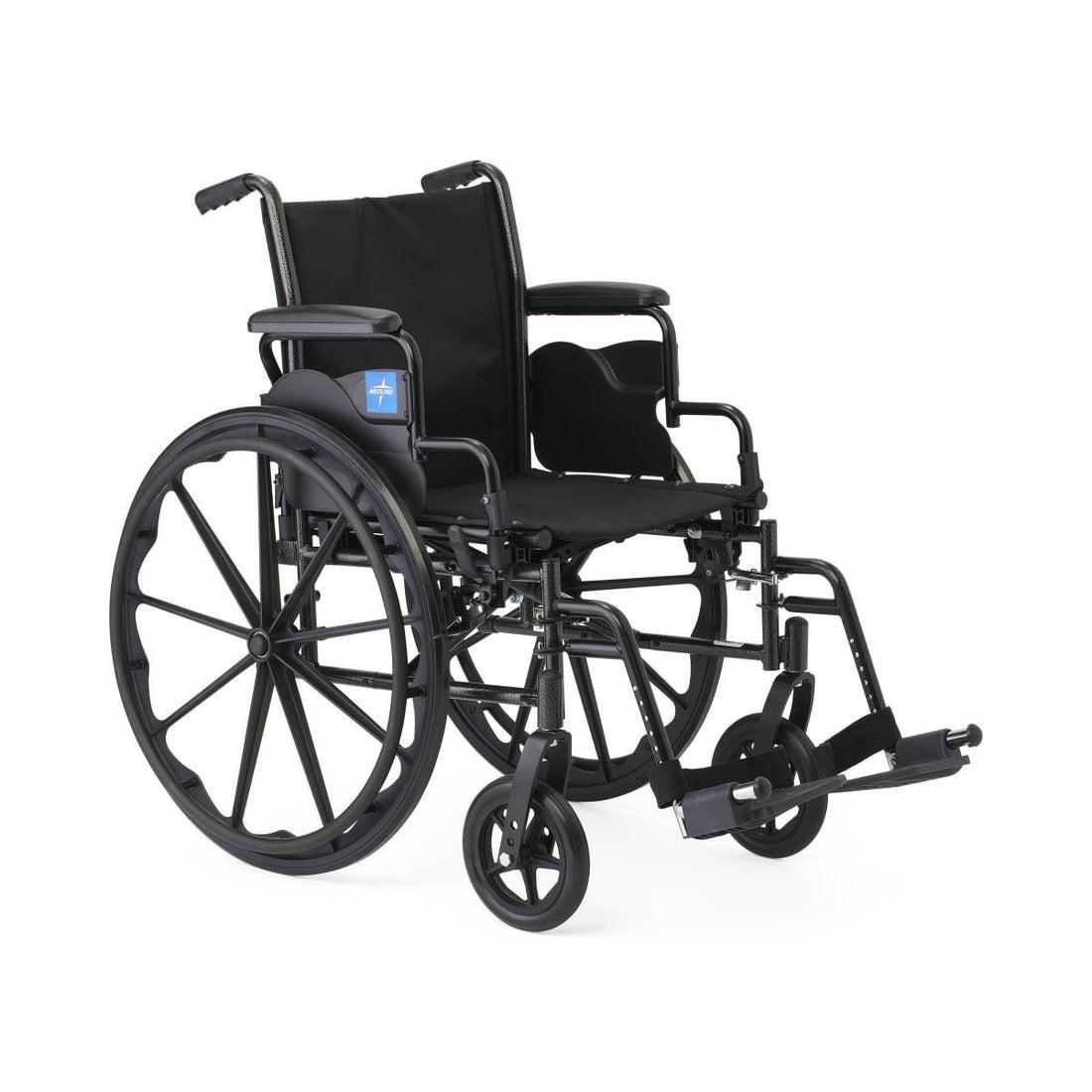Health
Healthy Babies: How Organic Milk Formula Nourishes Your Little One

The healthy development of a baby, especially in the early months, depends largely on proper nutrition. This is the first and one of the most important tasks that rests on the shoulders of new parents.
Fortunately, food created by nature itself comes to the rescue. Breast milk is the best natural food you can give to an infant.
Moreover, frequent and close contact with the mother makes the baby feel safe. A daily dose of “vitamin M” is as necessary for proper development as nutrition.
However, sometimes, breastfeeding is not possible. In such situations, European baby formulas are the only proper choice. Babies develop rapidly, have specific nutritional needs, and constantly maturing digestive systems.
Therefore, they must be fed with food appropriate to the needs of a small organism. Regular cow’s or goat’s milk contains little vitamins and iron, but a lot of protein and sodium. It is not suitable for infants.
What Is a Baby Formula?
Baby formulas are based on modified cow’s milk. The model for creating such products is human breast milk. During the production process of infant formula, the composition of cow’s milk is changed to bring it as close as possible to the composition of mother’s milk.
To meet the baby’s needs, the milk is subjected to appropriate modifications:
- changed amounts and proportions of proteins and fats;
- increased the content of vitamins, iron, and zinc;
- lowered sodium, potassium, and chlorine levels;
The body of a newborn baby is very sensitive and delicate. For this reason, the manufacturers of baby formulas ensure their products for infants contain valuable nutrients, such as easily digestible proteins and long-chain polyunsaturated fatty acids (LCPUFA), which support brain development and vision.
In addition, baby formulas have valuable protective substances, such as probiotics and prebiotics, which have a decisive impact on the development of healthy intestinal microflora.
This contributes significantly to strengthening the body’s defense forces since as much as 70% of immunity is located in the intestines. Healthy microflora is especially important in the first months of a child’s life when their immunity is not yet fully mature.
Regular baby formulas are intended for infants not allergic to cow’s milk protein. However, you can find various types of formulas for babies with specific nutritional needs.
Organic Baby Formulas – Inspired By Nature
Babies who cannot be breastfed or are only partially breastfed need an appropriate baby formula that contains all the valuable ingredients necessary for proper development.
Nature is the best inspiration so, using the latest research on mother’s milk, baby formula manufacturers have developed products inspired by nature. Many organic baby formulas are well suited to the nutritional needs of babies because they contain probiotics and prebiotics.
Each EU baby formula production batch is subjected to numerous rigorous inspections, guaranteeing the highest level of safety. The composition of infant formulas is strictly defined by law. Speaking of organic products, they are made of at least 95% products of organic origin.
It means that the milk is produced by cows or goats from organic farms, which adhere to the animal welfare principles and do not use any chemicals for production or animal feeding.
How to Prepare a Baby Formula?
You should always prepare the formula according to the guidelines indicated on the product package. Always prepare the mixture right before serving it to your little one, ensuring the prepared portion is fresh. If there are any leftovers, you should throw them away.
You cannot store the prepared mixture since it is a perfect environment for bacteria growth.
If you want to make the night feedings easier, you can prepare the right amount of water, heat it, and place it in a thermos. The necessary amount of powdered baby formula can be placed in a bottle for feeding.
When your little one wakes up for night feeding, just mix the water with the powder in a bottle and give it to your baby.
Final Word
Please keep in mind that the choice of baby formula for your little one should be made after consulting a pediatrician, who will carefully assess your baby’s health and nutritional needs.
While there is a multiplicity of infant formulas on the market, only a specialist can objectively evaluate your little one’s requirements and guide you on this path.
Food
Craft Beer for Every Palate: How to Select the Right One for You


The world of craft beer is diverse, exciting, and full of unique flavors and styles to explore. Whether you’re a seasoned beer drinker or a newcomer to the craft beer scene, finding the right brew for your palate can be an enjoyable journey.
With so many beer styles available, ranging from light and refreshing to bold and complex, there’s a craft beer for every taste. In this guide, we’ll help you navigate the world of craft beer and find the perfect brew to match your preferences.
1. Understanding Craft Beer Basics
Before diving into specific styles and flavors, it’s important to understand the basics of craft beer. While beers may vary widely in flavor and complexity, most can be classified under two main categories: ales and lagers. The distinction lies in the fermentation process and yeast used.
Ales vs Lagers: The Primary Categories
- Ales are fermented at warmer temperatures and tend to have more robust and fruity flavors. Common ales include pale ales, IPAs, stouts, and porters.
- Lagers are fermented at cooler temperatures, resulting in crisper and cleaner flavors. Popular lagers include pilsners, bocks, and traditional German-style beers.
Key Ingredients in Craft Beer
Every craft beer contains four basic ingredients: water, malt, hops, and yeast. Each of these plays a critical role in shaping the beer’s flavor. Malt gives sweetness and body, hops provide bitterness and aroma, yeast contributes to fermentation and flavor nuances, and water affects the beer’s mouthfeel and character.
2. The Flavor Profile of Craft Beer
Understanding the flavor components of beer can help you articulate what you enjoy and guide you to beers that suit your palate.
Sweetness
The sweetness in beer comes from the malt used during the brewing process. Beers with a heavier malt profile, like stouts and brown ales, tend to be sweeter and have caramel, toffee, or chocolate notes. If you prefer sweeter drinks, you may want to try malt-forward beers.
Bitterness (IBU Scale)
Bitterness in beer is measured by the International Bitterness Units (IBU) scale. Hops contribute bitterness to balance the sweetness of the malt. Beers like IPAs are hop-forward and often feature pronounced bitterness. If you enjoy bitter or sharp flavors, an IPA or pale ale might be the right choice for you.
Sourness
Sour beers are intentionally brewed to have a tart or sour flavor, often achieved by adding the wild yeast or bacteria during fermentation. If you enjoy tart beverages like lemonade or kombucha, you might find sour ales or gosebeers appealing.
Aroma and Mouthfeel
The aroma and texture of a beer also impact its overall flavor. Some beers are known for their floral, fruity, or spicy aromas, while others offer a creamy, rich, or effervescent mouthfeel. Exploring different aromas and textures can improve your beer experience.
3. Popular Craft Beer Styles and Their Characteristics
With so many styles of craft beer to choose from, it’s helpful to familiarize yourself with some of the most popular varieties. Each has its own distinct characteristics and can appeal to different palates.
Pale Ales and IPAs
- Pale Ales are well-balanced beers with moderate hops and malt flavors. They are often slightly bitter but approachable for many beer drinkers.
- India Pale Ales (IPAs) are known for their strong hop flavors and bitterness. They come in various forms, from the citrusy and piney flavors of West Coast IPAs to the juicy and hazy profile of New England IPAs.
Stouts and Porters
- Stouts are dark, rich beers with flavors ranging from chocolate and coffee to roasted malt. Imperial Stouts are often higher in alcohol content and more intense in flavor.
- Porters are similar to stouts but tend to be slightly lighter in body with a more pronounced malt sweetness. Both styles are ideal for those who enjoy bold, dark beers.
Saisons and Wheat Beers
- Saison is a farmhouse ale that is typically light, dry, and slightly fruity with spicy or peppery notes. It’s a refreshing option for warm weather.
- Wheat Beers, including Hefeweizen and Belgian Wit, are brewed with a high percentage of wheat, resulting in a smooth and often cloudy appearance. They are light and often have fruity or clove-like flavors.
Sours and Wild Ales
- Sour Beers are intentionally tart or sour, often with fruity flavors. They can be light and refreshing like a Berliner Weisse or more complex like a barrel-aged Flanders Red Ale.
- Wild Ales are fermented with wild yeast, giving them funky and earthy flavors. They are adventurous beers for those who like unique, offbeat flavors.
4. How to Choose the Right Craft Beer for You
Selecting the right craft beer doesn’t have to be difficult. By considering your personal preferences, the occasion, and even the season, you can easily find a beer that suits your tastes.
Matching Beer to Your Taste Preferences
- For a Light, Refreshing Beer: Try a pilsner, wheat beer, or saison. These beers are crisp and easy to drink, with subtle flavors that aren’t too overwhelming.
- For Bold, Bitter Flavors: IPAs, especially double IPAs, will be your go-to. Their hop-forward profiles are often bitter but balanced with citrus or pine flavors.
- For Dark and Rich Beers: Stouts and porters will satisfy your craving for deeper, more intense flavors. Look for notes of chocolate, coffee, or roasted malt.
- For Adventurous Palates: If you like to explore new flavors, try a sour ale or a wild ale. These beers offer a range of tart, fruity, and funky flavors that can be a real departure from traditional beer styles.
Choosing Based on Occasion or Mood
The type of beer you choose can also depend on the occasion:
- Relaxing at Home: A smooth amber ale or lager can be perfect for winding down after a long day.
- Socializing with Friends: Go for a session IPA or pale ale, which have lower alcohol content and are easy to drink over a longer period.
- Celebrating a Special Occasion: Consider a limited-edition beer or a barrel-aged stout for a rich, indulgent experience.
Seasonal Beers and Limited Editions
Craft breweries often produce seasonal beers that align with the time of year. In the summer, you’ll find light, citrusy beers like session IPAs or gose, while winter brings darker, warming styles like spiced ales or barleywines. Trying seasonal beers is a great way to explore new flavors and celebrate the changing seasons.
5. Tips for Experimenting and Expanding Your Craft Beer Horizons
If you’re ready to dive deeper into the craft beer world, here are some tips to expand your horizons and enhance your experience.
Attending Beer Tastings and Festivals
Beer tastings and festivals are excellent opportunities to sample a wide range of beers in one setting. You’ll be able to try beers you might not normally buy, and you can talk to brewers about their creations. Tastings also allow you to compare similar styles side by side, helping you refine your palate.
Building Your Own Craft Beer Flight at Home
Creating your own beer flight is a fun way to explore different beer styles. Choose four or five beers that vary in style, and sample them one after another. Take notes on the flavors, aromas, and textures, and see which one you enjoy the most.
Keeping a Craft Beer Tasting Journal
If you’re serious about discovering your perfect craft beer, consider keeping a tasting journal. Jot down the name, style, and brewery of each beer you try, along with your impressions of its flavor, aroma, and mouthfeel. Over time, you’ll start to notice patterns in your preferences, making it easier to find beers you’ll love.
Conclusion: Finding Your Perfect Craft Beer
The beauty of craft beer lies in its diversity – there’s a beer for every palate, and the best part of the journey is the discovery process. By understanding basic beer styles, exploring the flavor components that appeal to you, and experimenting with new brews, you can find the perfect craft beer for any occasion.
So grab a glass, explore your local breweries, and enjoy the adventure of finding your ideal brew. Cheers!
Health
How to Combat Loneliness With Thoughtful Gestures


It’s tough to know the right thing to do when you have a friend or family member experiencing loneliness. Perhaps they lost a loved one or went through a breakup. Or maybe they recently moved to a new place and haven’t made friends yet.
Then again, they could be more introverted and prone to feelings of loneliness. In any event, you want to be there for them, but you just don’t know how. Here are some thoughtful gestures to try.
Send Gifts
Gift baskets are rarely a bad idea when it comes to any kind of pain, loss, suffering, or discomfort. Loneliness can lead to great sadness and even, over time, depression, which only feels more isolating.
Once you’re in that cycle, it’s hard to break free, and sometimes you need an outside force to shake you up. The arrival of a physical gift meant to be bright and cheery can be just that necessary force.
A gift basket is ideal for combating loneliness because it can be personalized to the tastes and interests of the recipient. You can build the basket yourself, taking the time to pick out items your loved one will appreciate.
If you don’t have time for that, many companies offer get well gift baskets that can be tailored to your needs. Either way, the arrival of this thoughtful gesture is sure to make anyone feel less alone.
Pick Up the Phone
It sounds crazy in this age of texts and emails, but a phone call can go a long way toward making a person feel loved. Part of feeling lonely includes a lack of love and comfort from others.
Many people who feel secure in their relationships can go days, weeks, and even months living by themselves and not needing the company of others. In contrast, those who don’t have those bonds, or who are new to independence, might suffer more.
You can help someone suffering in this way by picking up the phone. If you know your friend or family member is someone who doesn’t typically answer, text them in advance to let them know you want to talk.
Then, when you get them on the phone, have a conversation like you would if you were sitting together in a cafe. Don’t focus on the person’s loneliness unless they bring it up. Just gossip and share funny stories to lighten the mood and lift their spirits.
Plan to Hang Out
Speaking of sitting together in a cafe, if you live close to the person, plan a hangout session! It might seem obvious, but so many people are so busy these days, so you sympathize with someone’s plight but you shrug off the actual solution.
You can combat loneliness by spending time together. Friendship and community are beneficial to your overall health, too, so you’re doing something good for both of you.
Ask your loved one what they would like to do and then plan accordingly. If they can’t answer that question, take the matter into your own hands. Schedule a morning walk, which will boost endorphins and make you both happier.
Plan a trip to a local cafe for coffee and pastries. Or just bring snacks, magazines, and desserts over to their house and crash on their couch watching reality TV together. The idea is to combat loneliness with togetherness.
Pay for a Class
Another option if you’re physically close to each other is to take a class together. Classes are typically community-based as the people involved have a shared interest. They’re a great way to bring people together, discuss the topic at hand, and foster new friendships.
It’s also just an opportunity to get out of your house and be around other people. You get bonus points if the class is yoga or some other form of exercise that will boost happiness chemicals in your brain.
Even if you’re not close to your friend or family member, you can pay for a class you know they would like. During one of your chatty phone calls, you can pick their brain about their interests.
In most cities, you can find classes for just about anything. Pottery, paint and sip, writing, and more are offered at community centers and local studios. Get your friend a pass for a few classes and then check in on how it’s going.
Respond
Finally, and perhaps most obviously, one of the best things you can do for a friend who’s struggling with loneliness is to respond. So many people are so caught up in their own lives that they often don’t pick up on the subtle distress signals others are sending.
It’s so easy to leave someone on “read” and not get back to them for days or weeks. Of course, it’s not personal, but it can be detrimental to their state of mind.
You don’t have to send back a book-length text. Just respond when you see the text with something like, “Hey! I’m super busy right now. Let’s plan a call/walk/coffee date for this weekend!” Let the person know you see them, you hear them, and you’re here for them.
Just that quick, 30-second text can keep someone from feeling like they’re alone in this big, busy world. Then, be sure to follow up.
Again, there’s no perfect way or right way to help someone combat loneliness. And you might be struggling with your issues, too, so don’t take this situation on as a burden. Instead, see reaching out, sending a gift basket, or planning a morning walk as beneficial to your health.
Community, friendship, and good deeds are all contributors to feeling better about your life in general. And you’ll be helping someone else out along the way.
Health
Wheelchairs: Types, Functions, Advantages, and Recommendations for Choosing


Wheelchairs are an essential means of transportation for people with disabilities, helping them maintain mobility, independence, and improve their quality of life. They provide comfort and convenience in everyday life, allowing users to be active and independent.
Let’s explore the different types, functions, and advantages of wheelchairs, and provide recommendations on how to choose the right one.
Types of Wheelchairs
There are several types of wheelchairs, each with its own characteristics and purpose:
1. Mechanical.
Mechanical or manual wheelchairs are propelled by the user or an assistant. They are simple in design, lightweight and affordable.
Advantages:
- Light weight.
- Easy to use and maintain.
- Relatively low cost.
- Do not require power supply.
Disadvantages:
- Require physical effort to move.
- Limited speed and range of movement.
- Not suitable for people with limited hand strength.
2. Electric.
Equipped with a motor and controlled by a joystick or remote control. They are suitable for people with disabilities who cannot move the wheelchair on their own.
Advantages:
- Easy to operate.
- Ability to travel long distances.
- High level of comfort and support.
- Suitable for users with reduced mobility.
Disadvantages:
- High cost.
- The need for regular battery charging.
- Large weight and dimensions.
3. Sports.
Sports wheelchairs are designed for active users who play sports or lead an active lifestyle. They have a lightweight and durable design, with special wheels and accessories to improve maneuverability and speed.
Advantages:
- Lightness and maneuverability.
- Strength and durability.
- Suitable for an active lifestyle.
Disadvantages:
- High cost.
- Not always suitable for everyday use.
4. Children’s.
Children’s wheelchairs are specially designed for young users with disabilities. They take into account children’s physiological characteristics and provide a high level of comfort and safety.
Advantages:
- Adaptation to the needs of children.
- Adjustable components for child growth.
- High level of comfort and safety.
Disadvantages:
- Limited period of use due to the child’s growth.
- High cost of specialized models.
5. Wheelchairs for an active lifestyle.
Designed for users who lead an active lifestyle despite physical limitations, including work, travel, and sports. They combine lightness, maneuverability, and comfort.
Advantages:
- High maneuverability and lightness.
- Suitable for an active lifestyle.
- Convenient for traveling.
Disadvantages:
- May be less comfortable for prolonged use.
- High cost.
You can find a wide range of wheelchairs from world-famous brands: https://medsupplycart.com/
Functions of Wheelchairs
They perform several important functions that help users maintain independence and improve their quality of life:
- Mobility. Their main function is to ensure the mobility of the user, allowing them to move around at home, at work, and on the street.
- Support. They provide the necessary support for people with disabilities, helping them maintain proper posture and avoid injury.
- Comfort. They provide comfort through ergonomic design, adjustable seats and backrests, and additional accessories such as armrests and footrests.
- Independence. Wheelchairs help users maintain their independence, allowing them to perform daily tasks and engage in social activities independently.
Advantages of Wheelchairs
Wheelchairs have several advantages that make them indispensable for people with disabilities:
- Improved quality of life. They help users lead an active lifestyle, participate in social activities, and maintain independence.
- Reducing physical activity. They reduce the physical load on a person with disabilities, allowing them to move around effortlessly.
- Improved safety. Ensure user safety by helping to avoid falls and injuries.
- Comfort and support. Provide comfort and support, helping to maintain proper posture and avoid pain and discomfort.
Recommendations for Choosing a Wheelchair.
- Identification of needs. Before choosing a wheelchair, it is important to identify your needs and requirements. Consider your lifestyle, activity level, physical abilities, and medical needs.
- Consultation with a specialist. Consult your doctor or rehabilitation specialist. They can help you determine which type of wheelchair is best for your needs.
- Read reviews and ratings. Read reviews and ratings of different models. This will help you find a reliable and comfortable wheelchair that meets your needs.
- Test the wheelchair. Be sure to try it out before you buy. Make sure it is comfortable, easy to operate, and meets your needs.
- Warranty and service. Check the warranty terms and availability of service centers in your area. This will ensure timely repairs and maintenance.
Wheelchairs are an important means of transportation for people with disabilities. They help maintain mobility, independence, and improve quality of life. Choosing the right wheelchair depends on the needs and requirements of the user, as well as the conditions in which it will be used. Consultation with a specialist, reading reviews and testing will help you make the right choice and ensure maximum comfort and support.
-



 Captions3 years ago
Captions3 years ago341 Sexy Captions to Fire Up Your Instagram Pictures
-



 Captions3 years ago
Captions3 years ago311 Night Out Captions for Instagram and Your Crazy Night
-



 Captions3 years ago
Captions3 years ago245 Saree Captions for Instagram to Boost Your Selfies in Saree
-



 Captions3 years ago
Captions3 years ago256 Best Ethnic Wear Captions for Instagram on Traditional Dress
-



 Captions3 years ago
Captions3 years ago230 Blurred Picture Captions for Instagram
-



 Captions3 years ago
Captions3 years ago275 Deep Captions for Instagram to Express Your Thoughts
-



 Quotes3 years ago
Quotes3 years ago222 Nail Captions for Instagram to Showcase Your Fresh Manicure
-



 Captions3 years ago
Captions3 years ago211 Laughing Captions for Instagram | Laughter Is the Best Medicine







